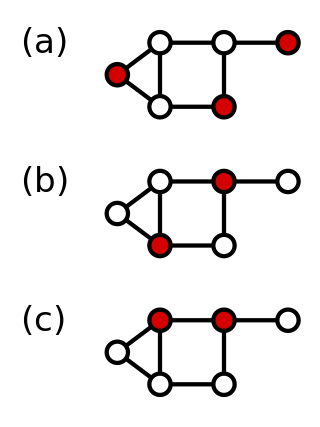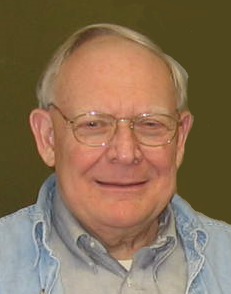Related Research Articles

Stephen Arthur Cook is an American-Canadian computer scientist and mathematician who has made significant contributions to the fields of complexity theory and proof complexity. He is a university professor emeritus at the University of Toronto, Department of Computer Science and Department of Mathematics.

Richard Manning Karp is an American computer scientist and computational theorist at the University of California, Berkeley. He is most notable for his research in the theory of algorithms, for which he received a Turing Award in 1985, The Benjamin Franklin Medal in Computer and Cognitive Science in 2004, and the Kyoto Prize in 2008.

László Lovász is a Hungarian mathematician and professor emeritus at Eötvös Loránd University, best known for his work in combinatorics, for which he was awarded the 2021 Abel Prize jointly with Avi Wigderson. He was the president of the International Mathematical Union from 2007 to 2010 and the president of the Hungarian Academy of Sciences from 2014 to 2020.

Frank Harary was an American mathematician, who specialized in graph theory. He was widely recognized as one of the "fathers" of modern graph theory. Harary was a master of clear exposition and, together with his many doctoral students, he standardized the terminology of graphs. He broadened the reach of this field to include physics, psychology, sociology, and even anthropology. Gifted with a keen sense of humor, Harary challenged and entertained audiences at all levels of mathematical sophistication. A particular trick he employed was to turn theorems into games—for instance, students would try to add red edges to a graph on six vertices in order to create a red triangle, while another group of students tried to add edges to create a blue triangle. Because of the theorem on friends and strangers, one team or the other would have to win.

In graph theory, a dominating set for a graph G is a subset D of its vertices, such that any vertex of G is in D, or has a neighbor in D. The domination numberγ(G) is the number of vertices in a smallest dominating set for G.

Jack R. Edmonds is an American-born and educated computer scientist and mathematician who lived and worked in Canada for much of his life. He has made fundamental contributions to the fields of combinatorial optimization, polyhedral combinatorics, discrete mathematics and the theory of computing. He was the recipient of the 1985 John von Neumann Theory Prize.

In graph theory, the strong product is a way of combining two graphs to make a larger graph. Two vertices are adjacent in the strong product when they come from pairs of vertices in the factor graphs that are either adjacent or identical. The strong product is one of several different graph product operations that have been studied in graph theory. The strong product of any two graphs can be constructed as the union of two other products of the same two graphs, the Cartesian product of graphs and the tensor product of graphs.
Michael J. T. Guy is a British computer scientist and mathematician. He is known for early work on computer systems, such as the Phoenix system at the University of Cambridge, and for contributions to number theory, computer algebra, and the theory of polyhedra in higher dimensions. He worked closely with John Horton Conway, and is the son of Conway's collaborator Richard K. Guy.
Daniel Alan Spielman has been a professor of applied mathematics and computer science at Yale University since 2006. As of 2018, he is the Sterling Professor of Computer Science at Yale. He is also the Co-Director of the Yale Institute for Network Science, since its founding, and chair of the newly established Department of Statistics and Data Science.
András Hajnal was a professor of mathematics at Rutgers University and a member of the Hungarian Academy of Sciences known for his work in set theory and combinatorics.

Gary Theodore Chartrand is an American-born mathematician who specializes in graph theory. He is known for his textbooks on introductory graph theory and for the concept of a highly irregular graph.

Renu Chakravarti Laskar is an Indian-born American mathematician, specializing in graph theory. She is Professor Emerita of Mathematical sciences at Clemson University. She received her Ph.D. in Mathematics from the University of Illinois at Urbana-Champaign in 1962. Renu Chakravarti Laskar's life was marked by a personal loss when her husband, Amulya L. Laskar, a distinguished professor of physics, died in 1991. His obituary in The New York Times recognized his contributions to physics and his role at the University of Missouri-Columbia.
Michael S. Jacobson is a mathematician, and Professor of Mathematical & Statistical Sciences in the Department of Mathematical & Statistical Science at the University of Colorado Denver. He served as Chair from 2003 to 2012 and was on loan serving as a program director in EHR/DUE at the National Science Foundation.
Eugene Michael Luks is an American mathematician and computer scientist, a professor emeritus of computer and information science at the University of Oregon. He is known for his research on the graph isomorphism problem and on algorithms for computational group theory.
In graph theory, an eternal dominating set for a graph G = (V, E) is a subset D of V such that D is a dominating set on which mobile guards are initially located (at most one guard may be located on any vertex). The set D must be such that for any infinite sequence of attacks occurring sequentially at vertices, the set D can be modified by moving a guard from an adjacent vertex to the attacked vertex, provided the attacked vertex has no guard on it at the time it is attacked. The configuration of guards after each attack must induce a dominating set. The eternal domination number, γ∞(G), is the minimum number of vertices possible in the initial set D. For example, the eternal domination number of the cycle on five vertices is two.
Teresa W. Haynes is an American professor of mathematics and statistics at East Tennessee State University known for her research in graph theory and particularly on dominating sets.
Ortrud R. Oellermann is a South African mathematician specializing in graph theory. She is a professor of mathematics at the University of Winnipeg.
Christina Magdalena (Kieka) Mynhardt is a South African born Canadian mathematician known for her work on dominating sets in graph theory, including domination versions of the eight queens puzzle. She is a professor of mathematics and statistics at the University of Victoria in Canada.
Sandra (Sandee) Mitchell Hedetniemi is an American mathematician and computer scientist, known for her research in graph theory and algorithms on graphs. She is a professor of computer science at Clemson University.
In mathematics, a bishop's graph is a graph that represents all legal moves of the chess piece the bishop on a chessboard. Each vertex represents a square on the chessboard and each edge represents a legal move of the bishop; that is, there is an edge between two vertices (squares) if they occupy a common diagonal. When the chessboard has dimensions , then the induced graph is called the bishop's graph.
References
- ↑ Chartrand, Gary; Haynes, Teresa W.; Henning, Michael A.; Zhang, Ping (2019). From Domination to Coloring: Stephen Hedetniemi's Graph Theory and Beyond. SpringerBriefs in Mathematics. Springer. doi:10.1007/978-3-030-31110-0. ISBN 9783030311094.
- ↑ "All School of Computing Affiliated Faculty". Clemson University . Retrieved February 20, 2024.
- ↑ Stephen T. Hedetniemi at the Mathematics Genealogy Project